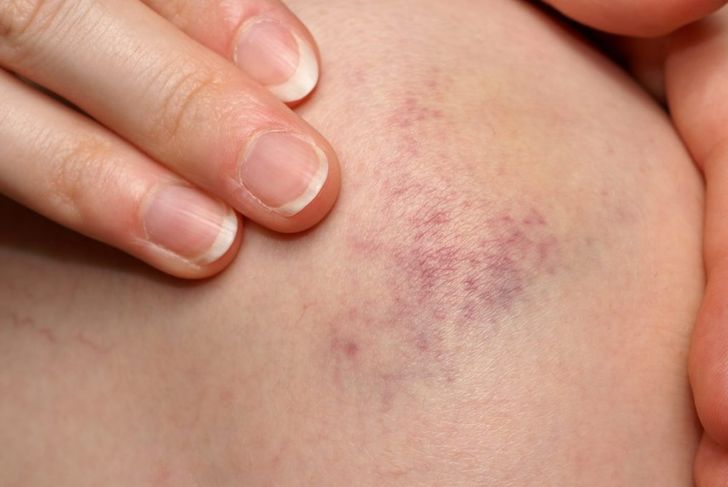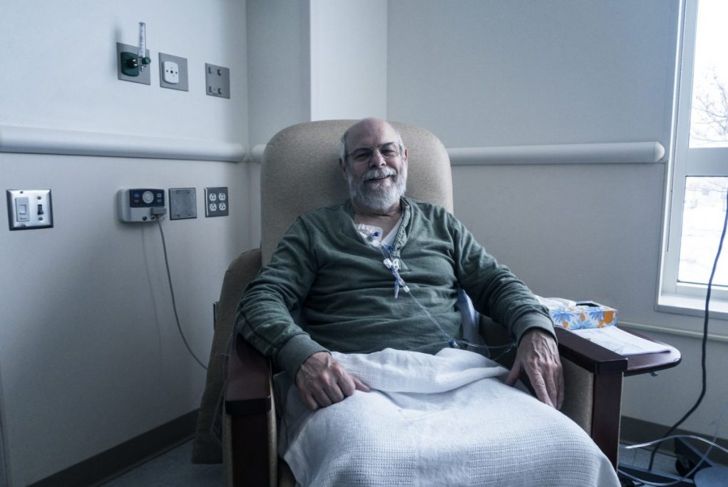Kaposi’s sarcoma is a type of cancer that has been the center of misinformation and myth for many years. It forms in the lining of the blood and lymph vessels and can cause a variety of issues. There are several types of Kaposi’s sarcoma. Each describes a method of transmission, location of origin, and specific symptoms. Depending on the type, Kaposi’s sarcoma ranges in severity and can become life-threatening if it affects certain organs.
Types of Kaposi’s Sarcoma
There are four types of Kaposi’s sarcoma.
- Classic Kaposi’s sarcoma is a rare, slow-growing form that typically affects men of Eastern European Jewish or Italian ancestry.
- Endemic or African Kaposi’s sarcoma primarily affects men of varying ages in Equatorial African countries. It can be slow-growing or aggressive.
- Epidemic or AIDS-associated Kaposi’s sarcoma is the most common type in the United States and Africa. It appears exclusively in people with HIV. Doctors use the presence of this type to note a progression from HIV-positive to AIDS.
- Iatrogenic or transplant-related Kaposi’s sarcoma develops in individuals who have received a transplant, caused by the immunosuppressants they must take.
Symptoms
All Kaposi’s sarcomas typically cause the same initial symptoms. The earliest symptoms include purple, brown, or red lesions or patches on the skin. In some cases, these lesions resemble bruises. The patches are small but grow larger as the condition progresses. Over time, tumors begin to form in different areas of the body. The exact growth rate of the condition and the tumors is usually dependant on its type.
Manifestations of Specific Types
Each type of Kaposi’s sarcoma has unique clinical presentations in addition to the standard symptoms.
- Classic Kaposi’s sarcoma usually results in fewer lesions that appear primarily on the feet and lower limbs. Additionally, the lesions grow much slower than with other types.
- Endemic Kaposi’s sarcoma affects people under the age of 40 and can even develop in children. Sometimes this form mimics classic Kaposi’s sarcoma, though it can be aggressive and spread to the internal organs and lymphatic system.
- Epidemic Kaposi’s sarcoma is incredibly aggressive and presents with many lesions. The lesions often appear on the face and body. Internal tumors are common.
- Iatrogenic Kaposi’s sarcoma often develops suddenly and typically only affects the skin. However, it can rapidly spread and progress.
Complications
As Kaposi’s sarcoma spreads, it can cause several complications. The most common are secondary malignancy and secondary infections. In some instances, it develops into lymphoma, a cancer of the lymphatic system. As fluid accumulates in the legs, people experience swelling and intense pain, which may lead to skin infections. If the tumors spread in the internal organs, such as the lungs or gastrointestinal tract, bleeding is common. This can be fatal.
A Fifth Type
Recently, some experts have begun to discuss the possibility of a fifth type of Kaposi’s sarcoma that appears in males who have sex with males, but neither individual has HIV. This suggests that either there is a misunderstanding about epidemic Kaposi’s sarcoma or there is another form that requires additional research. Doctors refer to this fifth type of Kaposis’ sarcoma as mon-epidemic Kaposi’s sarcoma. Though the observable cases were males who have sex with males, some researchers suggest that any person could contract non-epidemic Kaposi’s sarcoma. Research is currently ongoing. This form presents similarly to classic Kaposi’s sarcoma and progresses slowly.
Causes
In 1994, investigations of Kaposi tumor genetic material led to an important discovery. Kaposi’s sarcoma is the result of a virus, specifically the Kaposi’s sarcoma-associated herpesvirus (KSHV), also known as human herpesvirus 8 (HHV8). Most people have some type of herpesvirus, but the immune system prevents it from threatening health. In people with weakened immune systems, such as those with HIV or who are taking immunosuppressants following a transplant, the virus can cause harm. KSHV appears to spread similarly to HIV. Specifically, it spreads through oral-genital contact, oral-anal contact, or deep kissing.
Preventing Kaposi’s Sarcoma
For individuals who are HIV-positive and have KSHV, medications can reduce the risk of the virus developing into Kaposi’s sarcoma. Many treatment options for those with HIV focus on boosting the immune system, which is sometimes all it takes to avoid the secondary diagnosis. Treating infections as soon as they appear may also lower the risk. Many of the medications HIV-positive people take to fight herpesvirus infections also combat Kaposi’s sarcoma.
Diagnosis
When diagnosing Kaposi’s sarcoma, doctors will typically perform blood tests, x-rays, or a biopsy. In this test, they remove a small piece of tissue and examine it in a lab. If the biopsy shows evidence of Kaposi’s sarcoma, physicians will generally ask several questions. They will determine if their patient is HIV-positive or has another issue suppressing their immune system. They may also ask their patient about specific symptoms such as leg swelling, nausea, bloody stools, coughing, or breathing issues.
Stages
After diagnosing Kaposi’s sarcoma, doctors will often attempt to figure out if it has spread and to what extent. Most doctors use the AIDS Clinical Trial Group system to stage Kaposi’s sarcoma. This system considers three factors: the extent of the tumor, the status of the immune system, and the extent of systemic illness. Under each of the three groups, two categories determine whether there is a good risk (0) or poor risk (1). For example, a ranking of T0 means that the tumor is localized to a small area. A ranking of T1 means the lesions are widespread and dangerous.
Treatment
Currently, there is no cure for Kaposi’s sarcoma and treatments can vary to address different factors. For epidemic Kaposi’s sarcoma, medications that boost immune system activity are effective. People who have received a transplant will simply stop taking their immunosuppressants or try a different type. Minor surgeries can treat skin lesions that appear. People with many skin lesions will usually undergo radiation treatments. If Kaposi’s sarcoma has spread to the internal organs, chemotherapy is the most effective option.

 Home
Home Health
Health Diet & Nutrition
Diet & Nutrition Living Well
Living Well More
More




















